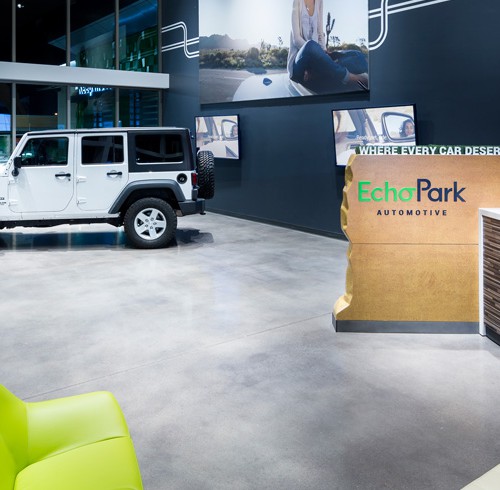Google Reportedly Transforming Self-Driving Car Division Into Standalone Business In 2016

Starting in 2016, Google’s autonomous vehicle division will operate as a standalone business under its parent company, Alphabet Inc., according to an unnamed source.
The report further indicates that Google’s self-driving car service may start offering rides for hire in major cities, such as San Francisco and Austin, thereby directly competing with ride-sharing services such as Uber and Lyft.
Google’s self-driving vehicles have logged more than 1 million miles on public roads to date. The unnamed source explained that since most of this has taken place in San Francisco and Austin, these cities would be logical places to launch its service. The fleets would include a range of large and small vehicles and could be initially deployed in confined areas such as college campuses, military bases or corporate office parks.
This information provides the clearest indication yet about how Google plans to make money from self-driving technologies, which the company started testing in 2009. Polls indicate that while one-third of U.S. consumers are interested in buying self-driving cars, the remainder are worried about the loss of control. Thilo Koslowski, vice president and automotive practice leader at Gartner Inc., discussed the effect that Google’s self-driving car service could have on the future of transportation.
“These potential ride-for-hire services could allow consumers to experience the technology and embrace it in a bigger way,” said Koslowski. “That would help not just Google but the entire industry.”
However, a recent proposal from the California Department of Motor Vehicles threatens to interfere with Google’s plans and the future of self-driving cars overall. The proposal would require all driverless cars to have a steering wheel and pedals, as well as a human driver with an “autonomous vehicle operator certificate” to take control of the car if necessary.
This proposal could create a major upheaval in Google’s plans. After testing for a number of years exclusively with sensor-loaded Lexus SUVs, Google has now designed its own prototype two-person vehicle that will not have a steering wheel or pedals in its finished form. The company’s prototypes that are currently logging test miles have temporary wheels and pedals.
“In developing vehicles that can take anyone from A to B at the push of a button, we’re hoping to transform mobility for millions of people, whether by reducing the 94 percent of accidents caused by human error or bringing everyday destinations within reach of those who might otherwise be excluded by their inability to drive a car,” wrote Google representative Johnny Luu in a statement. “Safety is our highest priority and primary motivator as we do this. We’re gravely disappointed that California is already writing a ceiling on the potential for fully self-driving cars to help all of us who live here.”
According to the draft regulations, manufacturers would additionally have to put driverless cars through a third-party safety test, regularly report accidents, implement security measures to detect, respond and alert a driver if someone hacks the vehicle, and inform passengers about the type of data that is collected by the vehicles.
It’s a complex issue. If these rules are finalized, they could lead Google to continue testing its driverless cars in other states.
Google executive and robotic-car expert Chris Urmson blasted the DMV’s proposed regulations, calling them a step back from progressive 2012 state regulations that allowed for the development of occupant-as-passenger vehicles without a steering wheel or pedals.
“People are telling us daily that fully self-driving cars are worth a shot,” said Urmson. “The status quo on our roads is simply not problem-free, it has a real cost, not only in productivity and stress, but in lives damaged and destroyed by the mistakes of human drivers. Around the world, 1.2 million people die on the roads each year. In the U.S., 94 percent of crashes are caused by human error.”
And Google isn’t the only party that has raised concerns about the DMV’s proposal. California Secretary of State, Alex Padilla, offered his support to measures that allow for the rapid progress of self-driving technologies.
“Autonomous vehicle technology will prevent accidents and will greatly reduce injuries and fatalities,” said Padilla. “I firmly believe that we have a responsibility to facilitate the deployment of fully autonomous vehicles sooner rather than later. I authored the bill to encourage the development of autonomous vehicle technology because doing so is a moral imperative. This technology will save lives of real people, young and old.”
There are many in the world of self-driving technology development that feel regulations such as those that are being proposed by the California DMV will prevent autonomous cars from being as life-changing as they should be in the future. Thilo Koslowski from Gartner says that the notion of autonomous car rules “that fall back on the driver defies the value of having a self-driving car. There certainly has to be a certification of the technology, but the idea of the concept is to ultimately be able to check yourself out of the driving process.”
Clearly, the California DMV views this concept as problematic, and it will be very interesting to see whether or not the proposal goes through. The new DMV rules will be debated twice in 2016 before being voted on, and we’ll be watching closely to see how this important story develops in the new year.












Warning: count(): Parameter must be an array or an object that implements Countable in /home/pg4b1yzvrqqo/domains/test.drivingsalesnews.com/html/wp-includes/class-wp-comment-query.php on line 399